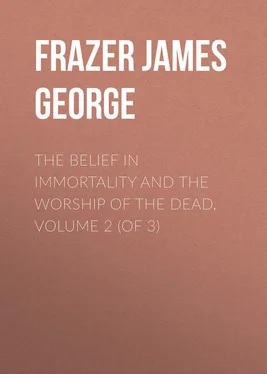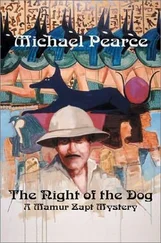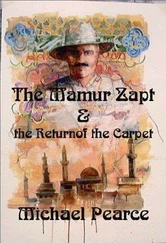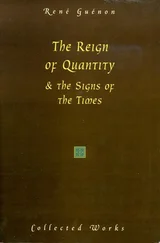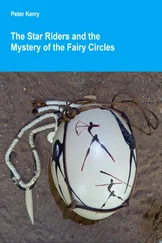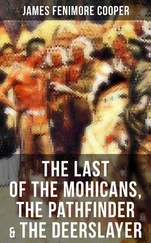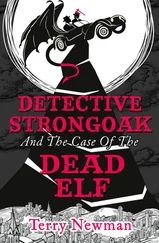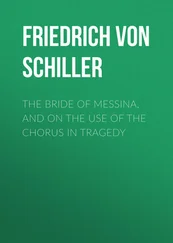James Frazer - The Belief in Immortality and the Worship of the Dead, Volume 2 (of 3)
Здесь есть возможность читать онлайн «James Frazer - The Belief in Immortality and the Worship of the Dead, Volume 2 (of 3)» — ознакомительный отрывок электронной книги совершенно бесплатно, а после прочтения отрывка купить полную версию. В некоторых случаях можно слушать аудио, скачать через торрент в формате fb2 и присутствует краткое содержание. Жанр: foreign_antique, foreign_prose, на английском языке. Описание произведения, (предисловие) а так же отзывы посетителей доступны на портале библиотеки ЛибКат.
- Название:The Belief in Immortality and the Worship of the Dead, Volume 2 (of 3)
- Автор:
- Жанр:
- Год:неизвестен
- ISBN:нет данных
- Рейтинг книги:3 / 5. Голосов: 1
-
Избранное:Добавить в избранное
- Отзывы:
-
Ваша оценка:
- 60
- 1
- 2
- 3
- 4
- 5
The Belief in Immortality and the Worship of the Dead, Volume 2 (of 3): краткое содержание, описание и аннотация
Предлагаем к чтению аннотацию, описание, краткое содержание или предисловие (зависит от того, что написал сам автор книги «The Belief in Immortality and the Worship of the Dead, Volume 2 (of 3)»). Если вы не нашли необходимую информацию о книге — напишите в комментариях, мы постараемся отыскать её.
The Belief in Immortality and the Worship of the Dead, Volume 2 (of 3) — читать онлайн ознакомительный отрывок
Ниже представлен текст книги, разбитый по страницам. Система сохранения места последней прочитанной страницы, позволяет с удобством читать онлайн бесплатно книгу «The Belief in Immortality and the Worship of the Dead, Volume 2 (of 3)», без необходимости каждый раз заново искать на чём Вы остановились. Поставьте закладку, и сможете в любой момент перейти на страницу, на которой закончили чтение.
Интервал:
Закладка:
Not uncommonly the bones of the dead, instead of being preserved, were burned. 56 56 R. Taylor, Te Ika A Maui , p. 220. This was called tahunga , "burning," a word no doubt derived from tahu , "to set on fire, kindle." See E. Tregear, Maori-Polynesian Comparative Dictionary , p. 444, s. v. "tahu."
But cremation, though not unusual, seems never to have been a general custom with the Maoris. They resorted to it only in exceptional circumstances, for example, in order to stay the spread of disease, or in cases where a tribe occupied open country and found no suitable place where to lay the bones of their dead after exhumation. Cremation for the latter reason is said to have been practised by the Ngati-apa tribe in the Rangatikikei District, and also by the tribes who occupied the Waimate Plains. An old earthwork fort near the present township of Manaia was the scene of many cremations of the Maori dead in former days. Again, it was a common custom for a raiding party to cremate their dead in the enemy's country, when there was no time to carry them home for the usual obsequies. The intention of burning them was to prevent the enemy from eating the bodies and making fish-hooks out of the bones. For a similar reason even the wounded, whom they could not carry with them, were sometimes thrown into great fires and burnt alive. If the slain man was a chief, only his body would be consumed in the flames; his head would be cut off, steamed, cured, and carried home, to be wept over by his friends. In the Bay of Plenty district the bodies of persons who died of a certain disease called Kai uaua , apparently consumption, used to be burnt to prevent the spread of the malady, and all the ashes were carefully buried. 57 57 Elsdon Best, "Cremation amongst the Maori tribes of New Zealand," Man , xiv. (1914) pp. 110 sq.
Often enough the heads of dead relatives were cut off, dried, and preserved by the family for many years in order to be occasionally brought forth and mourned over. Sometimes a widow would sleep with her husband's severed head at her side. After a victory, too, it was customary to decapitate the slain foes and dry their heads, which were then carried home and used as scarecrows or stuck on short stakes in the village, where they were jeered at and reviled. When the time came to plant the sweet potatoes, and the priests recited their spells for the sake of the crops, the dried heads were sometimes brought out and placed at the edge of the field, for this was believed to promote the growth of the sweet potatoes. 58 58 Elsdon Best, "Notes on the Art of War as conducted by the Maori of New Zealand," Journal of the Polynesian Society , vol. xii. no. 4 (December 1903), pp. 195-197. Compare W. Yate, An Account of New Zealand , pp. 130 sqq. ; E. Dieffenbach, Travels in New Zealand , ii. 66.
Apparently the spirits of the dead were thought able to quicken the fruits of the earth.
At all events the Maoris undoubtedly believed that the souls of the departed survive the death of their bodies for a longer or shorter time and in their disembodied state can influence the living for weal or woe. The belief in the survival of the soul is strikingly manifested in their old custom of killing widows and slaves to serve dead chiefs in the other world. It found expression in the more harmless custom of laying food beside a dead person or burying it with him in the grave; but, as usually happens in such cases, the ghost only consumed the spiritual essence of the victuals, considerately leaving the gross material substance to be despatched by the priest. 59 59 J. Dumont d'Urville, op. cit. ii. 542; G. F. Angas, op. cit. ii. 71; R. Taylor, Te Ika A Maui , p. 220.
A dying Maori, unable to eat a loaf which a missionary had offered to him, begged that it might be kept for his ghost, who, after his death, would come and fortify himself with it for the journey to his long home. 60 60 J. Dumont d'Urville, l. c.
At Tanaraki the child of a chief was buried in its father's house, grasping in each of its little fists a taro for consumption in the other world. Over the grave were laid boards, and the family slept on them. When they thought that the child's body was sufficiently decayed, they dug it up, scraped the bones, and hung them in the verandah, where from time to time the priest recited spells to assist the soul in its ascent to heaven. Every spell was supposed to raise the soul one stage nearer to the abode of bliss. But the ascent was long and tedious, for there were no less than ten heavens one above the other; the tenth was believed to be the principal abode of the gods. When the parents of the child who had been despatched to the happy land with taro in each hand were asked, "Why taro, if the little one is gone to heaven?" they answered that they were not quite sure whether it went up or down, and therefore as an additional precaution they planted a seed of taro in the grave, so that their offspring might find something to eat either above or below. 61 61 R. Taylor, Te Ika A Maui , p. 220.
Similar ceremonies were performed to facilitate the ascension of the souls of chiefs and priests. Before the body was taken to the place of burial, it was laid out with its feet towards the north, and all the blood-relations of the deceased, men, women, and children, assembled round it. Then the priest, standing at the head of the corpse, between the rows of the people, chanted two incantations, of which the second was supposed to assist the soul to ascend to heaven. The priest next put a bulb of taro in the left hand of the corpse and chanted another incantation. After that, flaxen cords were tied with a slip-knot to a tassel of the mat in which the body was enshrouded, and a cord was placed in the hand of each child, boy and girl, present at the ceremony. When the priest had chanted one more incantation, each child pulled the cord with a jerk, to disconnect the soul from the body, lest it should remain and afflict the relatives. 62 62 John White, "A Chapter from Maori Mythology," Report of the Third Meeting of the Australasian Association for the Advancement of Science, held at Christchurch, New Zealand, in January 1891 , pp. 362 sq.
This last rite, with the reason assigned for it, is significant at once of the dread which the Maoris felt for departed spirits, and of the very materialistic conception which they entertained of the human soul, since they appear to have imagined that it could be detached from the body by jerking at a cord.
The wish to raise the soul to heaven was perhaps the motive for another curious rite performed at the obsequies of a chief. When the body had been buried, the chief returned to the village; but the men who had carried the body went to the nearest swamp, and having caught a swamp-sparrow ( matata ) sent word to the priest, who forthwith rejoined them. Each of the bearers was then provided with a stick to which certain of the feathers of the bird were tied. Then, holding the sticks in their hands, they sat on their heels in a row opposite the priest, who stood facing the east with a stick similarly adorned in his left hand. Next he moved to the south end of the row of men and chanted, and as he chanted he gradually raised his stick, while at the same time all the bearers, holding their sticks at arm's length, gradually raised them and their bodies simultaneously, keeping perfect time, till the priest had concluded his chant, when they all stood erect with outstretched arms. After that the priest collected the sticks and threw them down in front of the mua , which seems to have been a kind of altar. 63 63 John White, "A Chapter from Maori Mythology," op. cit. p. 363. As to the meaning of mua , see E. Tregear, Maori-Polynesian Comparative Dictionary , p. 267, s. v. "mua."
We may surmise that the ceremony was intended to waft the soul of the dead chief upward, the feathers of the bird being naturally fitted to facilitate its heavenward flight.
Интервал:
Закладка:
Похожие книги на «The Belief in Immortality and the Worship of the Dead, Volume 2 (of 3)»
Представляем Вашему вниманию похожие книги на «The Belief in Immortality and the Worship of the Dead, Volume 2 (of 3)» списком для выбора. Мы отобрали схожую по названию и смыслу литературу в надежде предоставить читателям больше вариантов отыскать новые, интересные, ещё непрочитанные произведения.
Обсуждение, отзывы о книге «The Belief in Immortality and the Worship of the Dead, Volume 2 (of 3)» и просто собственные мнения читателей. Оставьте ваши комментарии, напишите, что Вы думаете о произведении, его смысле или главных героях. Укажите что конкретно понравилось, а что нет, и почему Вы так считаете.
